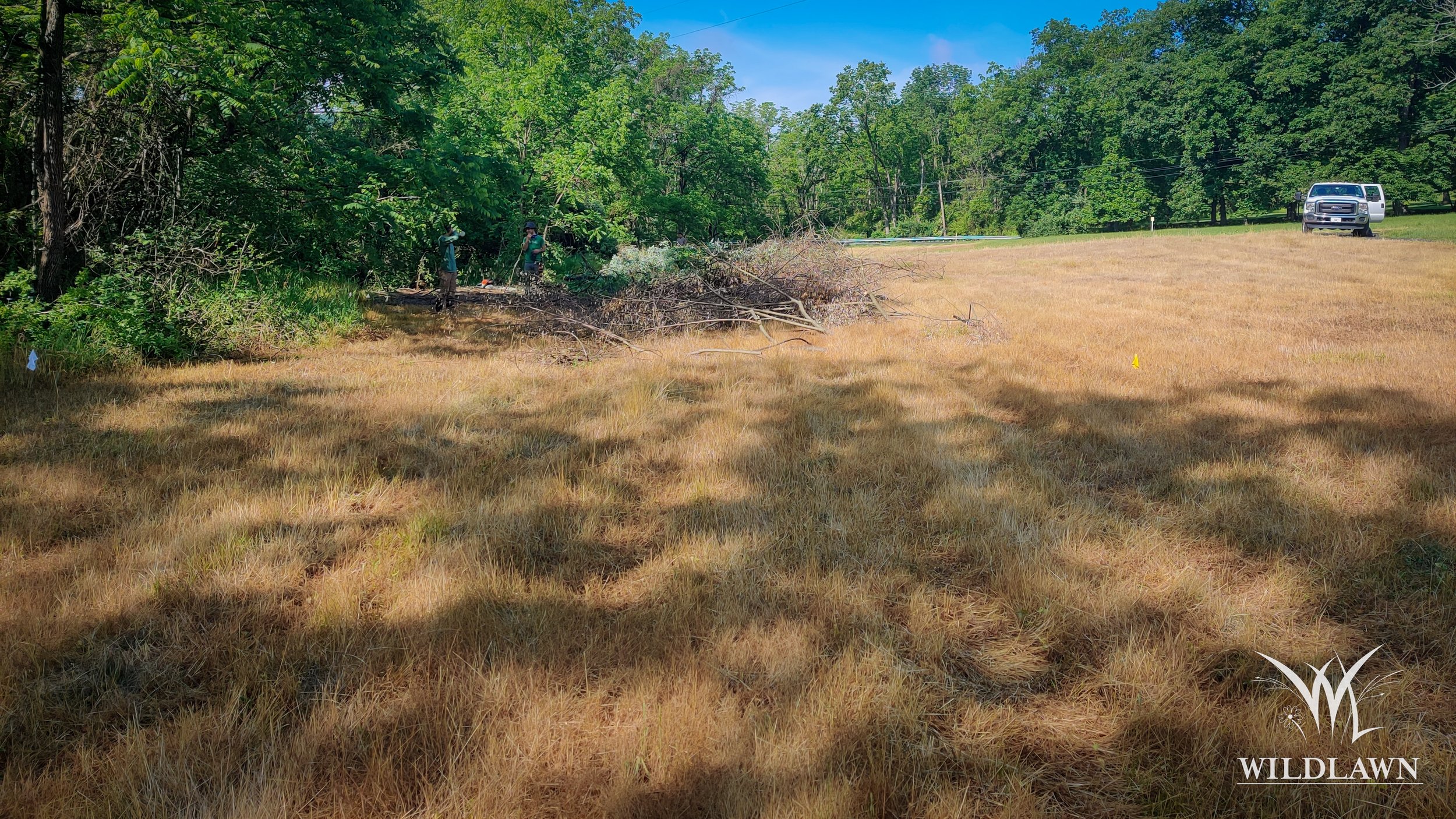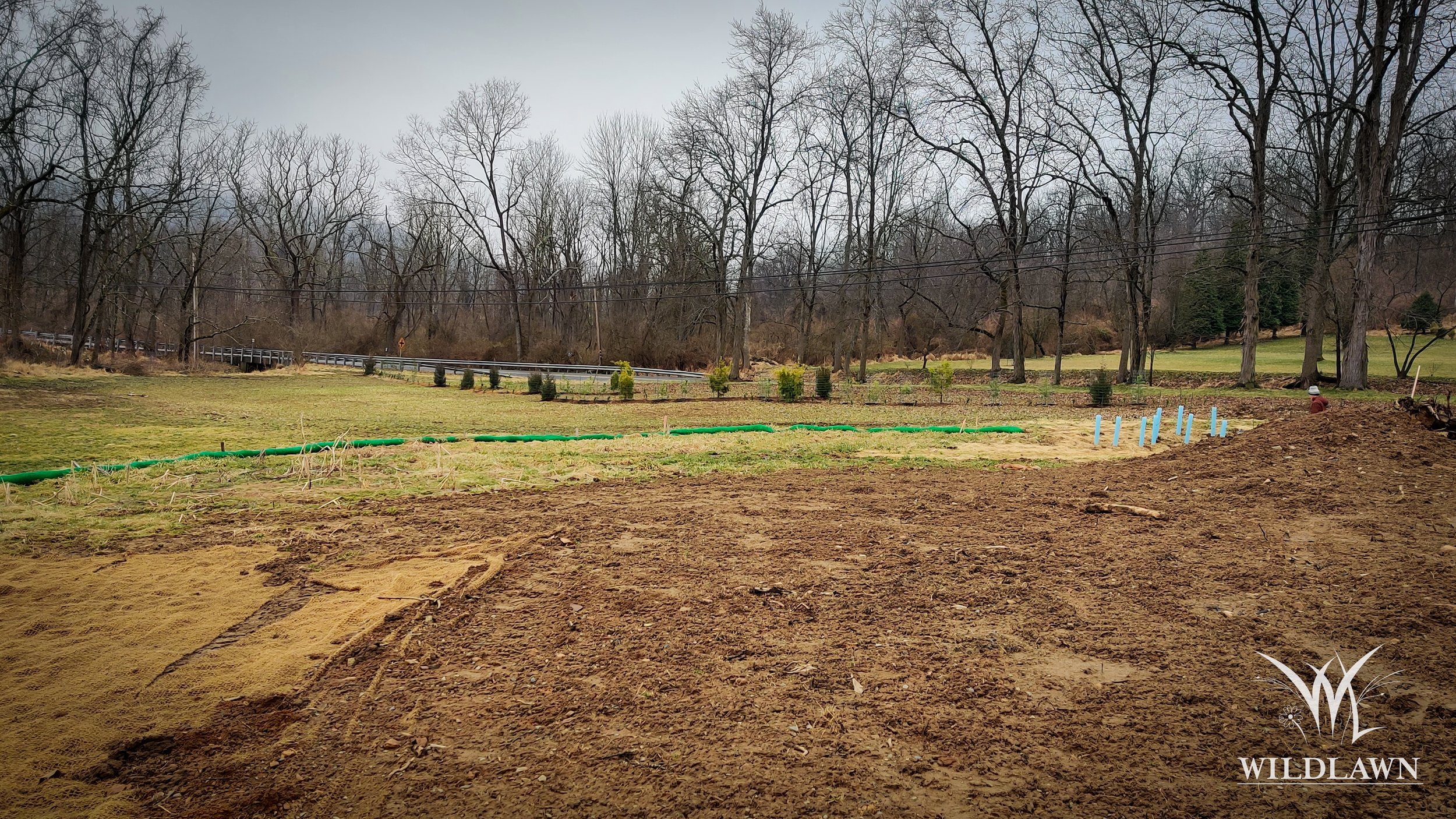
Large Lawn Conversion in Seven Easy Steps
This Pennsylvania resident purchased a vacation home in the hills of the Reading Prong. WildLawn was tasked with performing a complete lawn conversion over the entire property. Three contiguous acres of mown lawn and another acre of scattered lawn.
The resulting WildLawn features an expansive wildflower meadow spanning a dry upland zone down to a saturated floodplain zone.
A vegetated bioswale, a blueberry patch, native evergreen hedgerow, and a small botanical garden complete the lawn conversion.
Step 1 - Survey Areas for Conversion
DCNR Lawn Conversion Implementation Process
“Size does matter, according to Matteson and Langellotto, who determined that small scale plantings of mostly charismatic natives have little impact on beneficial insect populations, and therefore most birds. Quality habitat must have enough plants that provide both structural and biological benefits, not just pretty flowers, to support the lifecycles of the pollinators and insects we are trying to encourage.
Hence, PA DCNR has established that a half-acre planting of diverse, but appropriate, native species is the minimum size that can provide authentic ecological value to pollinators, wildlife, and to water quality.”
Step 2 - Suppress or Terminate Existing Turf Grasses
There are a variety of efficacious methods of terminating turfgrass or other mown lawns. Each method has its pros and cons. Physical termination of a lawn, through tilling or smothering, is an effective but expensive method that we can offer, or that you can do yourself. We all share concern about the overuse of chemicals in the landscape. WildLawn Technicians are certified herbicide applicators who are personally and ethically motivated to use as little chemical as possible when suppressing a lawn, whenever the use of chemical suppression is warranted.


Step 3 - Remove Invasive Shrubs and Trees
Removing invasive species from your property is an essential part of the lawn conversion process. The presence of invasive species along the margins of a new WildLawn or lawn conversion can threaten its long-term success. The process of performing a lawn conversion creates the perfect opportunity for invasives to quickly colonize the disturbed areas. Constant vigilance is required until the new WildLawn has fully established.
Step 4 - Mechanically terminate remaining lawn
Step 5 - Prepare seed bed, sow, and rake in.
“Choosing the right native seeds is the most critical decision and step in the overall lawn conversion process. Invariably, commercial seed mixes include species, and in proportions, that the purveyor wants you to buy - not what you need. The WildLawn design process thoroughly evaluates your site conditions throughout the year, and over time, and chooses seeds that will survive both cold, wet winters and long summer drought on your property. No website or seed vendor can do this for you...”
Step 6 - Monitor for Weeds
Most weeds are annuals and pose little threat to a new WildLawn or lawn conversion project unless they occur is such abundance that they risk smothering new, desirable seedlings. Much more problematic are perennial weeds, which can rapidly expand in the newly prepared WildLawn area. WildLawn Technicians monitor every new lawn conversion for signs of perennial weeds that could threaten your new habitat. Examples include mugwort, thistle, honeysuckle, Callery pear, bittersweet, and agricultural grasses.
Step 7 - Enjoy the first flush of flowers.
WildLawn includes native ‘marker’ species in each of our custom seed mixes for a few important reasons. First, they help us to verify sufficient coverage and identify areas that might need supplemental seeding. Second, they help locate different soil moisture regimes that might not have been apparent during our initial site visits, so that we can supplement the planting accordingly. And third, they provide something to see within the first year or two. Many of the most desirable native species that we use can take 3-5 years to successfully germinate and grow to a visible size. We want to be able to show you and your neighbors that something positive is happening in your new WildLawn in the meantime.
























